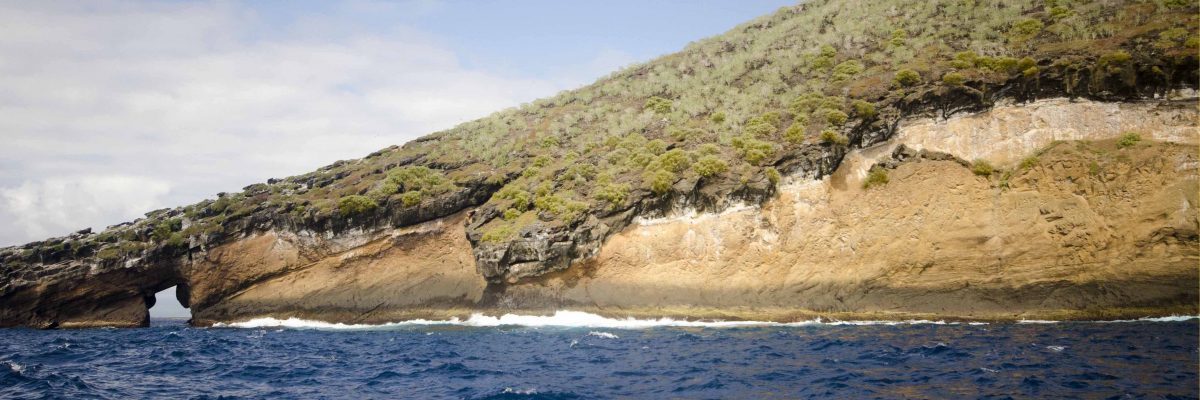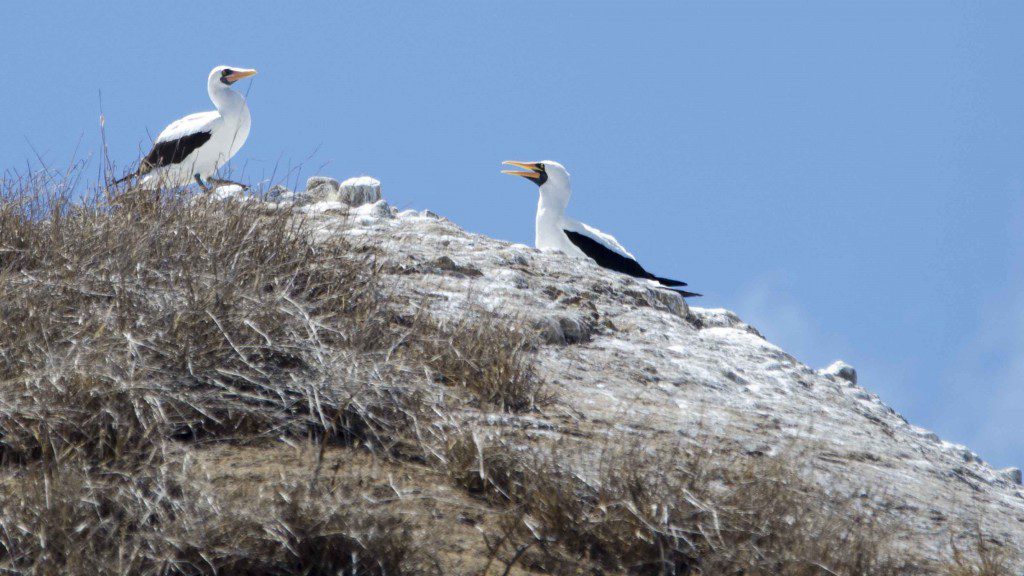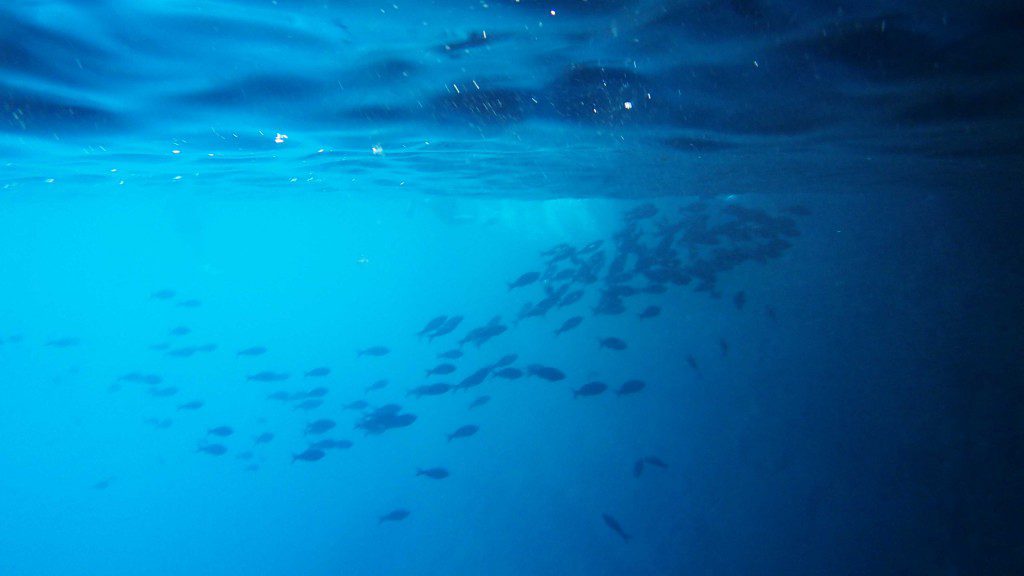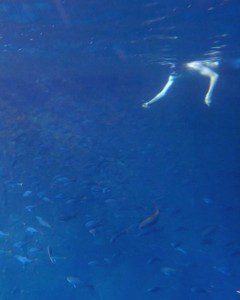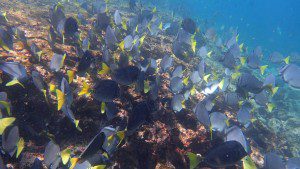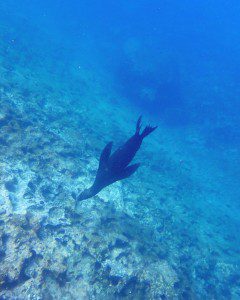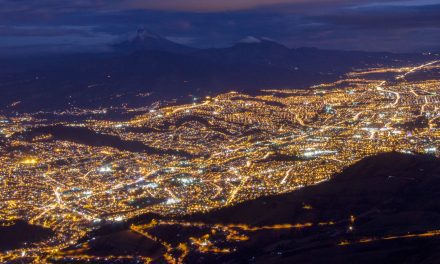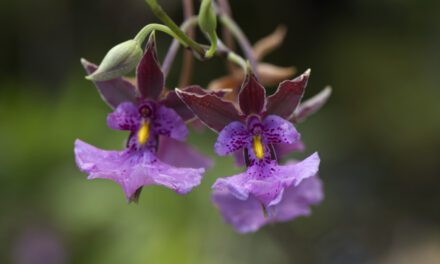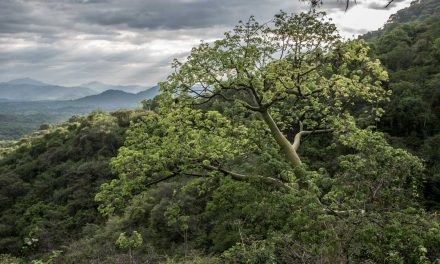As responsible travelers evolve, so do the stories we share.
This article is part of our living archive — trusted content we continue to care for.
First published on February 11, 2016 • Last updated on February 16, 2016.
For our family, this tour should have been called the Cuatro Ernestos rather than the Cuatro Hermanos. Between our family and the crew, four of our number had Ernesto as a name:
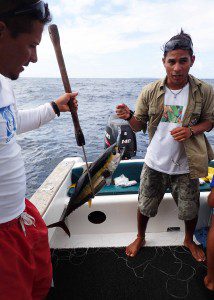
- Our captain, Vladamir Ernesto
- His brother and first mate, Joel Ernesto
- My husband, Ernest
- And our son, Ryan Ernest
Every time something wonderful happened on this glorious day, we credited to La Suerte de los Ernestos. And it was, indeed, a lucky day.
We started this tour mid-morning, the best time, according to our Captain, to catch fish. Our goal was to tour the four islands called the Cuatro Hermanos while trolling for tuna. This tour is an experiment in sustainable tourism recently started in the Galapagos. The National Park is encouraging fisherman to take tourists out by giving permits to allow hand-line and pole fishing in protected areas. The amount of fish that can be caught is negligible, but the experience is not. A successful fishing trip also means eating fresh ceviche on the boat, an opportunity not to be missed.
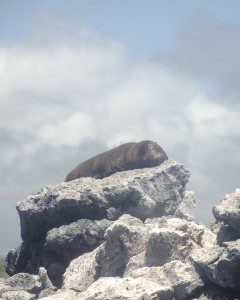 And while we were experiencing what I call the boring part of fishing, the part where we were catching nothing, the Captain was taking close to the rocky islands. We were able to observe the uncommon Galapagos Fur Seal. He should actually be called a Fur Sea Lion as he has ears (seals don’t) and his tail bends (a true seal has a tail that cannot rotate under its body). Fur seals have been protected by Ecuadorian Law since 1959 and their population is stable. But they can still be hard to see. They don’t come to beaches and they shy away from human habitation of all types. They can be found sunning on rocky ledges on the little islets found in the archipelago.
And while we were experiencing what I call the boring part of fishing, the part where we were catching nothing, the Captain was taking close to the rocky islands. We were able to observe the uncommon Galapagos Fur Seal. He should actually be called a Fur Sea Lion as he has ears (seals don’t) and his tail bends (a true seal has a tail that cannot rotate under its body). Fur seals have been protected by Ecuadorian Law since 1959 and their population is stable. But they can still be hard to see. They don’t come to beaches and they shy away from human habitation of all types. They can be found sunning on rocky ledges on the little islets found in the archipelago.
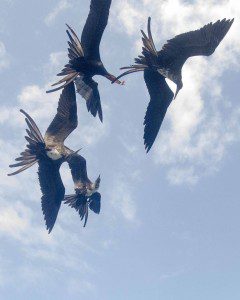 We also saw lots and lots of birds including, Blue-footed and Nazca Boobies, the Red-billed Tropic Bird, and the Magnificent Frigate Bird. Unfortunately, our trolling speed meant that the boat liked to rock and though I never got really sea sick, looking through a long lens while rocking side to side was beyond my abilities that day (just writing that line made my computer screen wobble and my stomach clench in sympathy). Close-up photos in the article come from other day trips.
We also saw lots and lots of birds including, Blue-footed and Nazca Boobies, the Red-billed Tropic Bird, and the Magnificent Frigate Bird. Unfortunately, our trolling speed meant that the boat liked to rock and though I never got really sea sick, looking through a long lens while rocking side to side was beyond my abilities that day (just writing that line made my computer screen wobble and my stomach clench in sympathy). Close-up photos in the article come from other day trips.
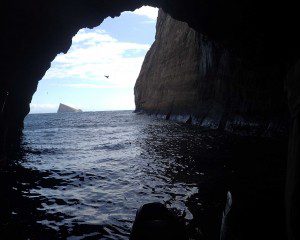 The day trip also included the opportunity to snorkel in one of the most unique locations in the Galapagos. A small cavern intrudes into the rocky face of the largest of the Cuatro Hermanos (for some reason they don’t have individual names). Although the boat could enter a short distance so that we could snap photos, it was much more exciting to swim in. With snorkeling gear on, we followed our guide into the heart of the cavern. The deep blue waters turn darker and darker until they were finally jet black. We were able to follow the path of his underwater flashlight and only turned around when we reached a place so narrow the swells from the tide could push up on one side or the other. The trip back was stunning as we swam from inky blackness into startling sunlight filtered through azure blue waters. We swam from a dark, cold place with little obvious life to a sea teeming with fish.
The day trip also included the opportunity to snorkel in one of the most unique locations in the Galapagos. A small cavern intrudes into the rocky face of the largest of the Cuatro Hermanos (for some reason they don’t have individual names). Although the boat could enter a short distance so that we could snap photos, it was much more exciting to swim in. With snorkeling gear on, we followed our guide into the heart of the cavern. The deep blue waters turn darker and darker until they were finally jet black. We were able to follow the path of his underwater flashlight and only turned around when we reached a place so narrow the swells from the tide could push up on one side or the other. The trip back was stunning as we swam from inky blackness into startling sunlight filtered through azure blue waters. We swam from a dark, cold place with little obvious life to a sea teeming with fish.
And then we snorkeled some more. The sea life attracted to small islands like this can be amazing. Many creatures make their homes in the rocky walls and it’s possible to swim very close to observe sea stars and urchins clinging to the rocks. Schools of tropical fish flit back and forth. Larger predator fish can often be seen deeper in the water. These rocky islands are also home to larger animals, like sharks and sea tortoises and sea lions. On any given day, you can swim with all or none, depending on luck. We saw white-tipped sharks and California sea lions swimming nearby.
- Swimming with schools of fish at 4 Hermanos, off Isla Isabela, the Galapagos
- A school of Razor Surgeonfish swimming at 4 Hermanos, near Isla Isabela, the Galapagos
- A Galapagos Sea Lion at 4 Hermanos, near Isla Isabela, the Galapagos.
- A King Angelfish with smaller Sabertooth Blennies found at 4 Hermanos near Isla Isabela, the Galapagos.
Our day ended with fresh ceviche lunch and a choppy ocean passage back to Puerto Villamil on Isla Isabela.
- Our Family Sharing a Bucket of Ceviche
- A Crew Selfie with the Bucket of Ceviche

